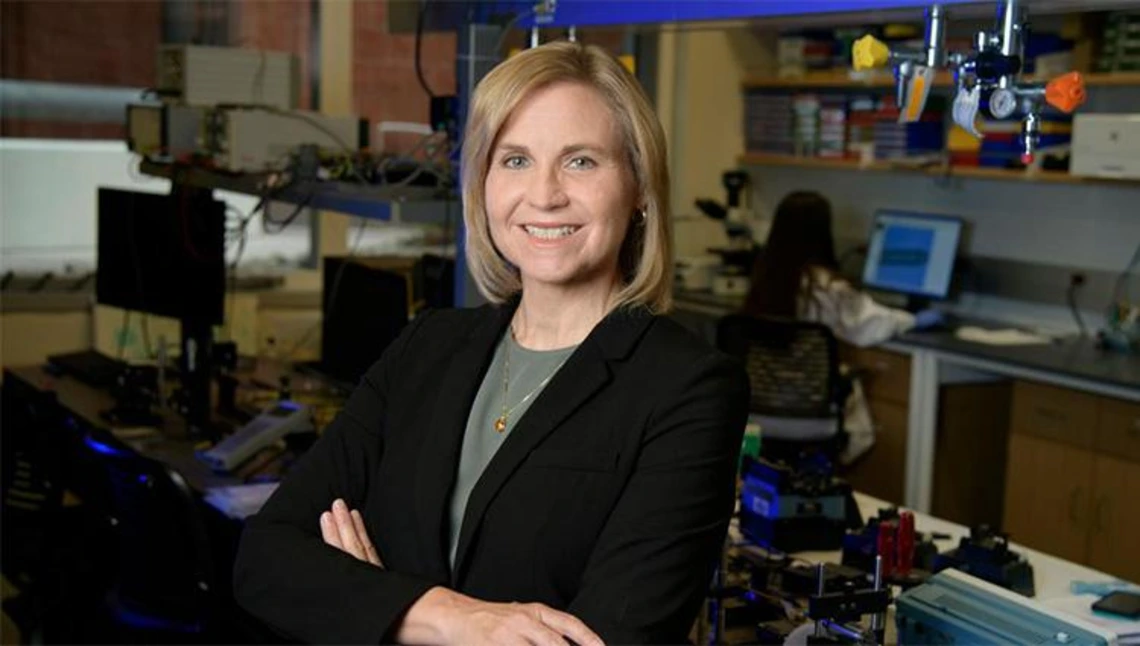Barton Discusses Emerging BIO5 Technology With SPIE

Jennifer Barton, BME professor and director of the BIO5 Institute, discussed some of the technologies being developed in BIO5 labs in a recent article for SPIE, the international society for optics and photonics.
For example, she highlighted the work of BME professor Judith Su, who does microfabrication of nanostructures designed to detect biomarkers in the body. One area her work focuses on is researching Alzheimer's disease.
"She needs to fabricate these devices and then we need to test them, to make sure they are useful as a diagnostic. Su works with the physicians and brain scientists here in the BIO5 Institute to make sure her biophotonic device works for this medical problem," Barton said.
BIO5 also works with microscopy in response to increased demand for "improved contrast agents for human cells." As Southern Arizona receives so much sun, BIO5 has a strong skin cancer-imaging program. BIO5 labs are looking at how to use tissue optics to diagnose skin cancer, which often involves taking a biopsy.
"How can you diagnose skin cancer without having to take a biopsy?" Barton said. "Melanoma of course is the killer, but how do we figure out the hallmarks of whether tissue is benign vs. a melanoma?"
Barton highlighted the importance of assistant BME professor Philipp Gutruf's research in optogenetics. Gutruf invented soft miniature tools, without batteries or wires, which use stretchable sensors and photonics to examine individual neurons.
Dongkyun Kang, assistant professor of optical sciences and BME, is updating optomechanics by taking scientific instruments like the confocal microscope and turning it into a portable handheld device that can be used to diagnose cancers in rural area. Barton described Kang's work as an example of "where optics is going."
Also discussed was the translational imaging that Barton works on to develop the first effective screening method for ovarian cancer.
"If you want to look at cells or tissue microstructure, you can't image very deeply. You end up needing to build endoscopes," Barton said, "the same advances in photonics and materials allow us to make tiny, flexible endoscopes that can go all kinds of places in a body, in a pretty minimally invasive manner."
